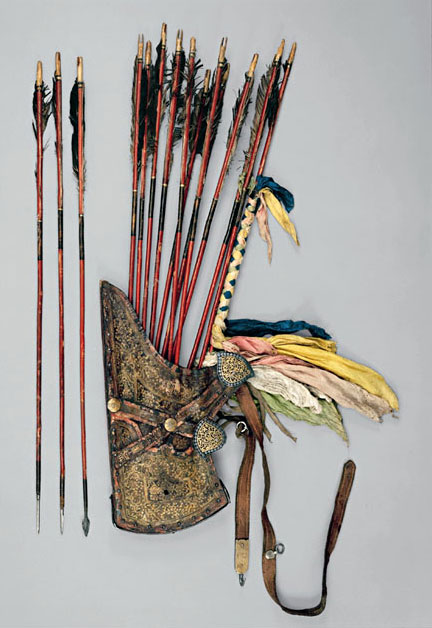|
|
previous image ||
Warriors of the Himalayas Introduction ||
next image
Quiver and Arrows
Tibetan, 17th–18th century
Leather, iron, gold, silver, wood, shellac, pigments,
cane or bamboo, feathers, textile
Quiver, L. 18½ in. (47 cm), W. 10 5/8 in. (27 cm); arrows, L.
35 3/8 in. (89.9 cm)
On loan courtesy of the National Museum of Scotland,
Royal Museum, Edinburgh (1927.321.A–O)
cat. no. 96

This beautifully decorated quiver is
of the same form and construction as the adjacent example,
but its style of decoration is different and suggests a
slightly later date. The designs are painted in gold on
a black ground, rather than executed in gold leaf with designs
painted in black lines, producing a more painterly effect.
The quiver is unusual in retaining a full set of arrows,
which have cane or bamboo shafts, ivory nocks, and iron
arrowheads of several different shapes and are fletched
with feathers. The shaft of one arrow is braided with strips
of silk of five different colors. Arrows adorned in this
way are used in marriage, divination, and long-life ceremonies.
|
all text & images © Metropolitan Museum
of Art |
previous
image || Warriors of the Himalayas Introduction
|| next image
|
|